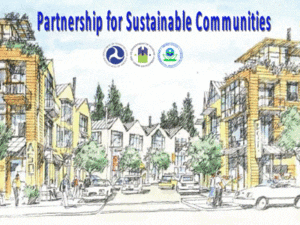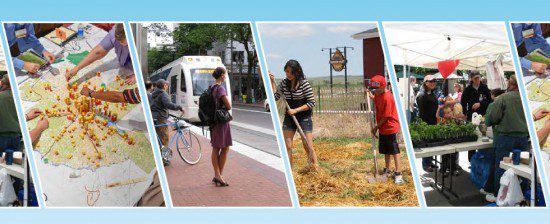 For the first time in human history, more than half the world’s population now lives in urban areas. With the percentage of people living in cities and urban zones projected to increase to two-thirds by 2050,reducing urban pollution and waste and conserving and protecting natural ecosystems and resources is essential if we are to sustain urban populations and a decent, healthy quality of life.
For the first time in human history, more than half the world’s population now lives in urban areas. With the percentage of people living in cities and urban zones projected to increase to two-thirds by 2050,reducing urban pollution and waste and conserving and protecting natural ecosystems and resources is essential if we are to sustain urban populations and a decent, healthy quality of life.
Sustainability initiatives aren’t limited to big cities, however. In an inter-agency effort to help U.S. communities develop and implement strategic sustainability plans, the U.S. Department of Housing and Urban Development (HUD), Department of Transportation (DOT) and Environmental Protection Agency (EPA) in June 2009 launched the Partnership for Sustainable Communities program. As the federal agencies explain, “six principles of livability” guide the partnership’s efforts “to coordinate federal housing, transportation, water, and other infrastructure investments to make neighborhoods more prosperous, allow people to live closer to jobs, save households time and money, and reduce pollution.”
The EPA reinforced these efforts on January 27, announcing that it will provide technical assistance to 22 communities “to pursue development strategies that support smart growth and sustainability goals and encourage local economic development.” Part and parcel of this initiative, EPA staff and national experts are conducting one- and two-day workshops in each community, the focus of which will be making good use of the sustainability tools each community requested in its application to the EPA.
Community sustainability: Building from the ground up

EPA selected 22 communities in 18 U.S. states from among 121 applicants to the Building Blocks for Sustainable Communities program. These are: Asheville, N.C.; Austin, Texas; Baton Rouge, La.; Canton, Miss.; Cincinnati, Ohio; Damariscotta, Maine; Danville, Ill.; Fresno, Calif.; Marysville, Wash.; Mobile, Ala.; Nederland, Colo.; New Paltz, N.Y.; Newburyport, Mass; Passaic County, N.J.; Polk County, Iowa; Prichard, Ala.; Red Cliff Band of Lake Superior Chippewa, Wis.; Santa Ynez Band of Chumash Indians, Calif; Scituate, Mass; St. Petersburg, Fla.; Steamboat Springs, Colo.; and Terre Haute, Ind.
This year’s sustainability tools outreach agenda concentrates on enabling community members to make good use of five tools: Bikeshare Planning; Equitable Development; Infill Development for Distressed Cities; Sustainable Strategies for Small Cities and Rural Areas, and flood resilience for Riverine and Coastal Communities.
Residents of Newbury, Massachusetts, for example, are using the EPA’s flood resilience tool to “explore green infrastructure solutions to coastal erosion and river flooding to protect the town’s vibrant riverfront economy.” Residents in New Paltz are making use of this sustainability tool to amend the village code “to make the historic downtown more resilient to flooding, which disproportionately affects minority and low-income residents.

“Many communities are seeking EPA’s assistance to think through how and where they will grow – while protecting the environment and helping members of the community most in need,” commented Joel Beauvais, associate administrator for EPA’s Office of Policy.
“Our Building Blocks program brings the technical know-how to help communities overcome the barriers to sustainable growth so they can plan for a healthier, more vibrant future.”
The Building Blocks for Sustainable Communities program has helped 130 communities in 41 states since 2011. Encompassing community groups, local and tribal governments, that has enhanced the capacity of public and private sector organizations and residents “to successfully implement smart growth and sustainable approaches that protect the environment, improve public health, create jobs, expand economic opportunity, prepare for the effects of climate change, and improve overall quality of life,” EPA highlights.
*Image credits: EPA


